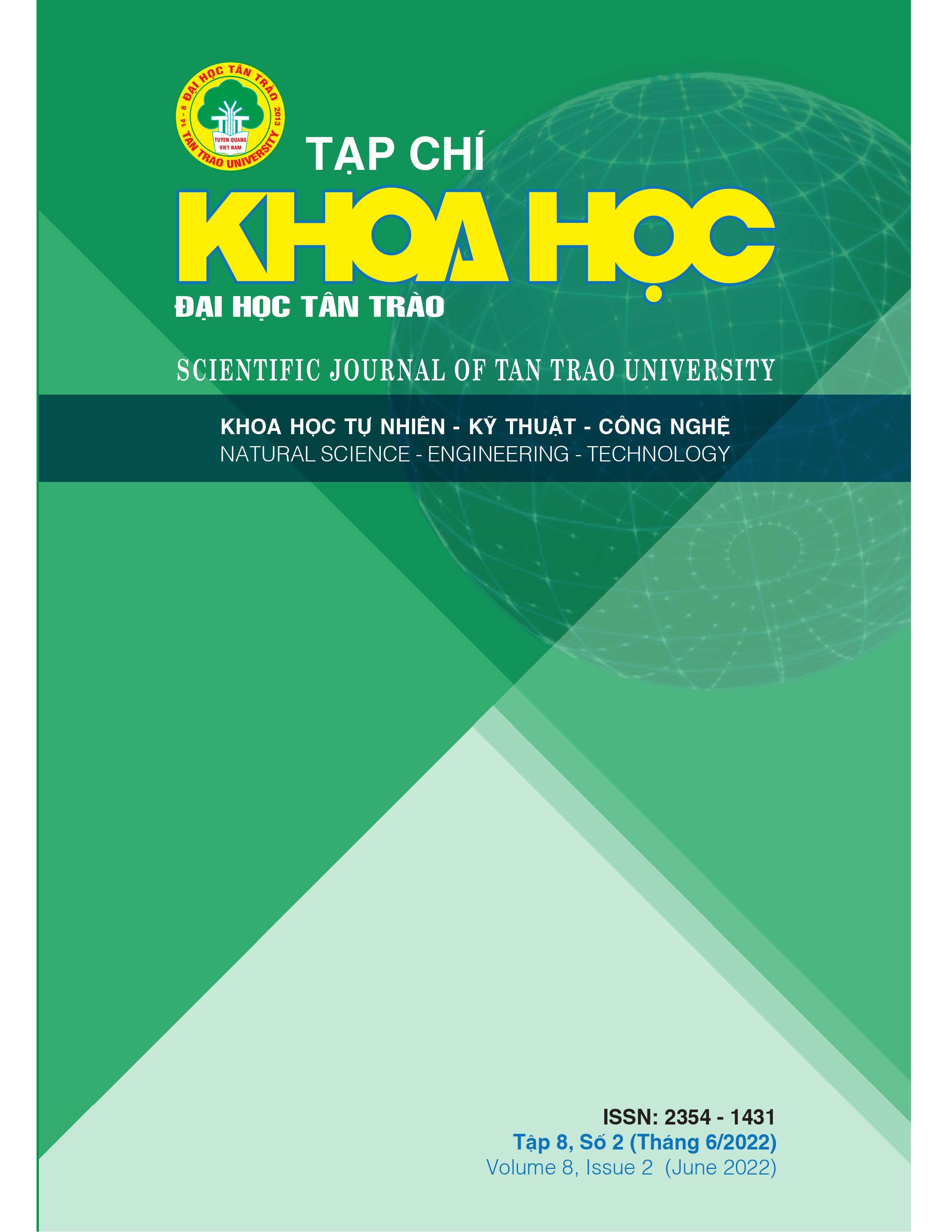RESEARCH ON THE SELECTION OF MICRO-ORGANISM DECOMPOSING ORGANIC MATTERSGENERATED IN THE PRODUCTION OF YARN FROM RAMI
DOI:
https://doi.org/10.51453/2354-1431/2022/757Keywords:
Green thorn (Ramie), Bioproducts, Cellulose resolutionAbstract
During the process of crop restructuring, thorns emerged as a bright object for many localities to choose in place of other inefficient crops. The area of green hemp for fiber production in Vietnam is over 1,000 hectares (2018). After taking the bark to make yarn, a large amount of rami waste is released into the environment. These wastes, after a period of time, in order to be naturally biodegradable, create a bad smell and rot for the surrounding environment. There is a need for a specialized microbial product to treat rami waste to clean up the environment, while creating an organic fertilizer supply back to the soil growing rami. To solve this problem, the research has collected, isolated and selected the strains of microorganisms having capability of resolving cellulose and lignin, the main components in the stems of rami. The results have selected four strains of microorganisms with high cellulose and lignin resolution activityto produce bio-degradable products of rami, including actinomycetes RR04, BG05, BG08, bacteria RR05. The study has also selected the most suitable fermentation medium, MT2, so that the strains of microorganisms have the best biological activity in treating hemp residue.
Downloads
References
[1] Tạ Thị Chinh, Tạ Kim Chỉnh, Nguyễn Thị tâm, Hoàng Như Thục (2012), “Kỹ thuật trồng, chăm sóc, thu hái và bảo quản sản phẩm từ cây gai xanh”, NXB Nông Nghiệp.
[2] Bộ Khoa học và Công nghệ công bố. Tiêu chuẩn quốc gia, TCVN 8741:2011, vi sinh vật nông nghiệp- Phương pháp bảo quản ngắn hạn
[3] Lê Huy Chính (2001). Vi sinh Y học. Nhà xuất bản Y học.
[4] Connie R., Mahon M.S., Giorge Manuselis J.R., W.B Saunder Company.1995.
Diagnostic Microbiology.
[5] Howard L., Ypdyke, Elaine L, Jame O. American Public Health Association, Inc, New York, 1970. Diagnostic Procudures for Bacterial, Mycotic, and parasitic infections, 5th. Bodily.
[6] Williams and Wilkins. Co (1986). Bergey- Manual of sustematic bacteriology
[7] Mocchau.sonla.gov.vn/.../4354, (2018), Triển vọng phát triển cây gai xanh tại huyện Mộc Châu tỉnh Sơn La
[8] nongnghieptre.com/ (2018), “Kỹ thuật trồng cây gai xanh (cây gai rami)” – Nông nghiệp trẻ
[9] https://tailieu.vn › Nông - Lâm - Ngư › Nông nghiệp (2018), Tài liệu Cây Gai Xanh chọn lọc - tailieuVN
[10] https://nongnghiep.vn › Khuyến nông › Trồng trọt (2018), Quảng Ngãi: Trồng thử nghiệm cây gai xanh - Báo Nông nghiệp
[11] elib.dostquangtri.gov.vn (2018), Nghiên cứu phát triển cây gai xanh - Hệ thống cơ sở dữ liệu Khoa học
Downloads
Published
How to Cite
Issue
Section
License

This work is licensed under a Creative Commons Attribution-ShareAlike 4.0 International License.
All articles published in SJTTU are licensed under a Creative Commons Attribution-ShareAlike 4.0 International (CC BY-SA) license. This means anyone is free to copy, transform, or redistribute articles for any lawful purpose in any medium, provided they give appropriate attribution to the original author(s) and SJTTU, link to the license, indicate if changes were made, and redistribute any derivative work under the same license.
Copyright on articles is retained by the respective author(s), without restrictions. A non-exclusive license is granted to SJTTU to publish the article and identify itself as its original publisher, along with the commercial right to include the article in a hardcopy issue for sale to libraries and individuals.
Although the conditions of the CC BY-SA license don't apply to authors (as the copyright holder of your article, you have no restrictions on your rights), by submitting to SJTTU, authors recognize the rights of readers, and must grant any third party the right to use their article to the extent provided by the license.


